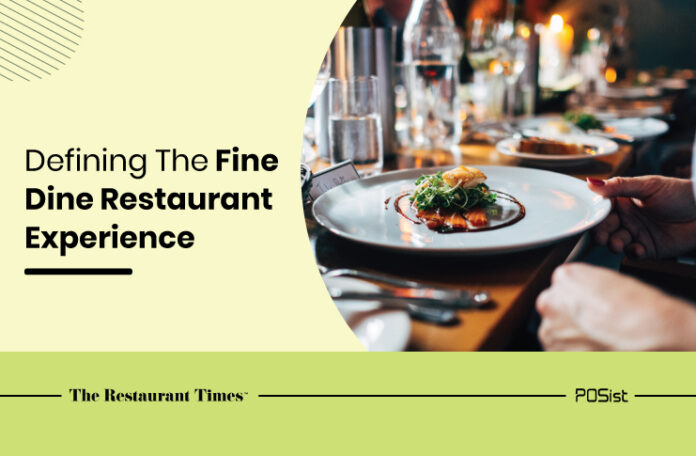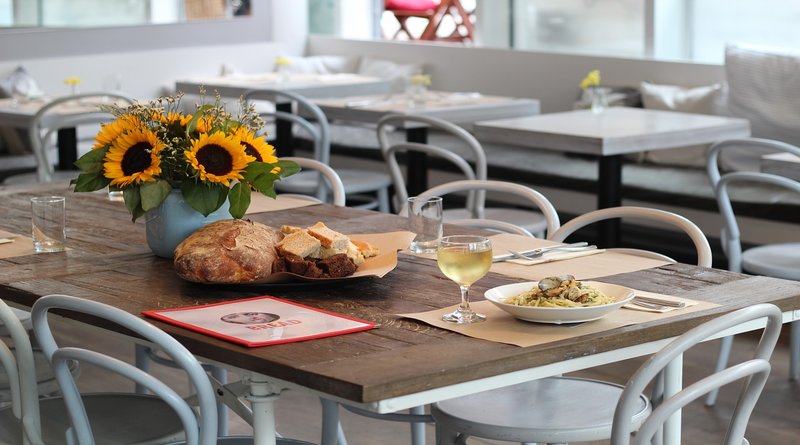Imagine entering a historic yet modern restaurant in one of your city’s most affluent neighbourhoods. It’s like going into another universe away from the buzz and bustle. You can look forward to enjoying a sumptuous escapade at this venue, which has been meticulously designed. Fine dining is an all-encompassing experience that includes elegant and sophisticated services as well as the highest-quality food. The ability to produce a refreshing and distinct ambience that goes beyond the conventional conventions of restaurant design is vital. In a fine dining restaurant, there are normally more staff members, and the personnel have a higher degree of training and skill. Celebrity chefs, experienced waitstaff and bartenders, and occasionally sommeliers or other food and beverage professionals will assist you in making food and beverage selections. When compared to a casual dining restaurant, fine dining offers an experience that is of better quality and exclusivity. Since its ambience is more sophisticated, the cuisine is served more formally.
A fine dining establishment’s fare will be of the best quality, prepared with rich ingredients, and presented in distinctive and attractive ways. The quality of the dishware and cutlery is also higher, and the restaurant’s décor and architecture are generally noteworthy. Fine dining costs more than casual dining, but you’re assured a better quality of food, an engaging environment, and highly trained personnel, among other things. Waiters and waitresses are expected to be given gratuities or tips by patrons.
A Fine Dine Experience And Its Features
Here is how you should feel at a fine dine restaurant.
1. Design
It’s all about the details when it comes to creating a good dining atmosphere. This includes more than just music, lighting, and wall art. Many fine dining establishments go so far as to design their china and stoneware to complement the ambience and the cuisine. You won’t be able to tell the difference between razor clams from a local source and those from a distributor, but food critics will. Every element should be carefully considered. Nothing should be excessively loud, bright, or obnoxious. The design should evoke a unique and unusual experience that visitors can associate with your fine dining venue. In other words, it must have a distinguishing trait that is unique in order to attract repeat consumers. This could be in the form of a theme, a signature piece of art, or a novel sensory element.
The restaurant should have a distinct personality that distinguishes it from other eateries in the neighbourhood. This can be achieved by adhering to a design concept that pervades every part of the restaurant, from the materials used to the furnishings and lighting. Themed restaurants, in particular, must make an extra effort to create designs that hint at the concept without being overt.
Colours are important in determining mood because each one creates a different emotion. Red and yellow, for example, are typically lively and dynamic colours found at fast-food restaurants, but gold and white are typically linked with peace and luxury. So, it’s critical to choose the correct colour palette to convey the level of opulence that a fine dining experience entails. A crowded colour palette might be a negative factor because it can make clients feel rushed. It’s crucial to keep the same colour scheme throughout the restaurant to make customers feel at ease.
2. Seating Layout
Fine dining is associated with luxury and elegance, and the materials used in the restaurant’s furnishings and flooring should reflect this. Marble, leather, and glass are some of the most prominent materials used to convey opulence. Customers typically place a lot of emphasis on privacy while dining at such establishments. So, it is critical to leave enough space between tables for each to have enough privacy. It’s also a good idea to avoid placing tables near the entrance, the kitchen, or the restrooms, as this will disrupt the client experience.
Finally, great dining is all about luxury and comfort. Regardless of the restaurant’s intricate design, it’s critical to maintain comfort. Details that appear to be insignificant, such as the table’s height in relation to the chairs, or the material of the cushions used, have a significant part to play in delivering comfort and a sense of generosity to the space. White tablecloths used to be a staple at fine dining restaurants, but that custom has largely faded away today. There’s generally a reason why a restaurant skips tablecloths: maintenance. It’s possible that restaurants don’t find them appealing anymore, or that they are eschewing traditional principles to build their own identity. Many restaurateurs now consider tables to be an important element of the design, and some are using custom designs from local artisans and raw materials like wood, stone from a nearby quarry, etc that better suit their idea.
3. Guest Experience Is Top-Notch
The importance of the guest experience cannot be overstated. After all, customers are paying for more than just the cuisine when they dine at a fine dining establishment. They’re looking for something completely different. A fine dining restaurant’s standard service SOPs should include holding the chair for women, guiding guests to the toilets if necessary, crumbing the table between meals, and changing linen napkins when a patron leaves. Between courses, new wine is never poured into the same glass, and silverware is completely replaced. Everything has to be in perfect working order. With that in mind, it’s a good idea for you to brush up on formal dining etiquette before heading out. Servers will be at their best, regardless of the restaurant’s concept.
An excellent fine dining server will be able to explain the full menu without using notes, and will frequently use emotional signals to engage the visitor. They know the right jokes, are there to help when you need it and are blissfully absent when you don’t. Many of the servers are well-versed in the bar menu, from the most recent wines to the most inventive custom cocktails. Fine dining necessitates waitstaff with expertise that extends beyond the menu to the restaurant industry as a whole. Fine dining service is not for the faint of heart, and with some high-end waiters earning six figures, it can be a lucrative career.
4. Ambience
Any restaurant’s ambience is usually created to produce a specific type of dining experience. And the difference between a fine dining and a casual dining environment is immediately apparent. A casual restaurant’s overall décor is usually quite relaxed, with a wacky or amusing tone or theme. With more people and less sound absorption, casual eateries are often noisier than fine dining places. To set the tone or drown out the noise, these eateries occasionally play loud, upbeat music. The waitstaff will be pleasant and dressed in a relaxed and comfortable manner.
A fine dining restaurant, on the other hand, oozes great elegance in every aspect of its environment. These restaurants are frequently located in lovely old buildings and/or in attractive natural settings with spectacular views from the dining rooms. Before you even enter the restaurant, the architecture and natural surroundings typically create the tone. Many fine dining establishments will not have music playing in the background. If they do play music, it’s usually classical fare played quietly enough not to disrupt dinner talks. At a fancy dining establishment, it’s usually much easier to hear your dinner partners. The subtle clinking of glassware and silverware can sometimes add to the experience. The lighting is also carefully selected to emulate natural light. As the evening progresses and it becomes darker outside, some of the top fine dining establishments dim the lights accordingly.
The beautiful linen-draped dining halls of the past are rarely found in today’s upscale dining establishments. Fresh, local food prepared in creative ways and delivered in an ambience unlike any other restaurant is now the focus. Fine dining will always remain an option for restaurant patrons, even as the concept evolves. The experience may be subjective, just like excellent art, but it is always of high quality. It’s an exciting moment to work in a diner. Creating a fine dining experience is all about making a big impact with small details. The design elements in such areas must generate a distinct but unified image that is consistent with the restaurant’s aesthetic and atmosphere. Today’s fine dining establishments even offer discreetly personalized dinnerware and silverware to maintain a consistent look. Fine dining restaurants are thus designed to leave a strong impression through minor but effective touches, assisting them in building their legacy and patronage.
Looking forward to opening a fine restaurant? Here’s how you can do it!
















